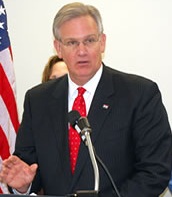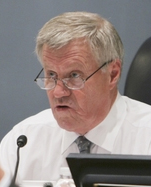A new report says America’s warfighters are leaders in the use of alternative fuels.
This story from ExecutiveGov.com says a Pew Charitable Trust report has good news about the U.S. Department of Defense’s use of solar, geothermal and biodiesel:
According to [Phyllis Cuttino, director of Pew Charitable Trusts’ climate and energy programs], DoD accounts for 80 percent of the U.S. government’s energy consumption, which amounts to 330,000 barrels of oil and 3.8 billion kilowatts of electricity per day for more than 500 major military installations. However, she said, the department is working to meet its stated goal of having one-fourth of its energy come from renewable sources by 2025.
The report, “Reenergizing America’s Defense: How the Armed Forces Are Stepping Forward to Combat Climate Change and Improve U.S. Energy Posture,” details how the department and military services are progressing toward that goal. Amanda J. Dory, deputy assistant secretary of defense for strategy; Navy Secretary Ray Mabus; and John W. Warner, a former Navy secretary, were involved in the report and the conference call.
The decreasing reliance on fossil fuels “will make us better warfighters,” Mabus said, by reducing dependence on oil from volatile nations, and by freeing up warfighters from delivering as much fuel and reducing the high-risk of attacks on convoys that carry it.
 In Afghanistan, troops are using solar-powered water purification systems to decrease the use of fossil fuels and the need to haul water, Mabus said. Marines there are using things such as spray-on insulation to keep tents warm in winter and cool in summer, and Marines at Marine Corps Base Quantico in Virginia are testing alternative fuels and other products to reduce the need to ship fuel to Afghanistan, he said.
In Afghanistan, troops are using solar-powered water purification systems to decrease the use of fossil fuels and the need to haul water, Mabus said. Marines there are using things such as spray-on insulation to keep tents warm in winter and cool in summer, and Marines at Marine Corps Base Quantico in Virginia are testing alternative fuels and other products to reduce the need to ship fuel to Afghanistan, he said.
Additional examples of how the Navy is going green include developing a carrier strike group that will run completely on alternative fuels; powering the Naval Air Weapons Station China Lake by geothermal sources; and commissioning the USS Makin Island, a large-deck amphibious ship propelled by both gas and electric engines.
And don’t forget, it was just last month that the Air Force flew for the first time an A-10 Thunderbolt II, better known as the Warthog, on a biomass-based jet fuel.










 House Agriculture Committee Chairman Collin Peterson (D-MN) expects the Environmental Protection Agency to approve 15 percent ethanol blends for regular gasoline by August.
House Agriculture Committee Chairman Collin Peterson (D-MN) expects the Environmental Protection Agency to approve 15 percent ethanol blends for regular gasoline by August.  Grassley said the lapse of the separate tax credit for biodiesel, which expired at the end of 2009, has cost 29,000 clean-energy jobs and put 23,000 more at risk. “We can’t risk a repeat performance with ethanol, where 112,000 jobs are at stake.” Of the ethanol tariff, Grassley said, “the United States already provides generous duty-free access to imported ethanol under the Caribbean Basin Initiative, but the CBI cap has never once been fulfilled. In fact, last year, only 25 percent of it was even used by Brazil and other countries.”
Grassley said the lapse of the separate tax credit for biodiesel, which expired at the end of 2009, has cost 29,000 clean-energy jobs and put 23,000 more at risk. “We can’t risk a repeat performance with ethanol, where 112,000 jobs are at stake.” Of the ethanol tariff, Grassley said, “the United States already provides generous duty-free access to imported ethanol under the Caribbean Basin Initiative, but the CBI cap has never once been fulfilled. In fact, last year, only 25 percent of it was even used by Brazil and other countries.” “Our country is in serious danger because of skyrocketing energy costs,” said Sen. Conrad. “This growing crisis demands urgent action. We must be committed to coming together in a bipartisan way to lessen our dependence on foreign oil, while aggressively pursuing alternative sources of energy such as biofuels. Extending these tax credits is a step in the right direction.”
“Our country is in serious danger because of skyrocketing energy costs,” said Sen. Conrad. “This growing crisis demands urgent action. We must be committed to coming together in a bipartisan way to lessen our dependence on foreign oil, while aggressively pursuing alternative sources of energy such as biofuels. Extending these tax credits is a step in the right direction.” The ethanol industry praised the Senate action. “Extending these measures will ensure job growth and economic development across the entire country—all while reducing our dependence on foreign oil and cleaning our skies,” Tom Buis, CEO of
The ethanol industry praised the Senate action. “Extending these measures will ensure job growth and economic development across the entire country—all while reducing our dependence on foreign oil and cleaning our skies,” Tom Buis, CEO of  “Tax incentives aiding the expansion of America’s ethanol industry are sound public policies by any economic, environmental or energy measure,” said
“Tax incentives aiding the expansion of America’s ethanol industry are sound public policies by any economic, environmental or energy measure,” said  “The American people directly benefit from ethanol through the creation of hundreds of thousands of jobs and by saving money on a clean, renewable product at the pump,” said
“The American people directly benefit from ethanol through the creation of hundreds of thousands of jobs and by saving money on a clean, renewable product at the pump,” said